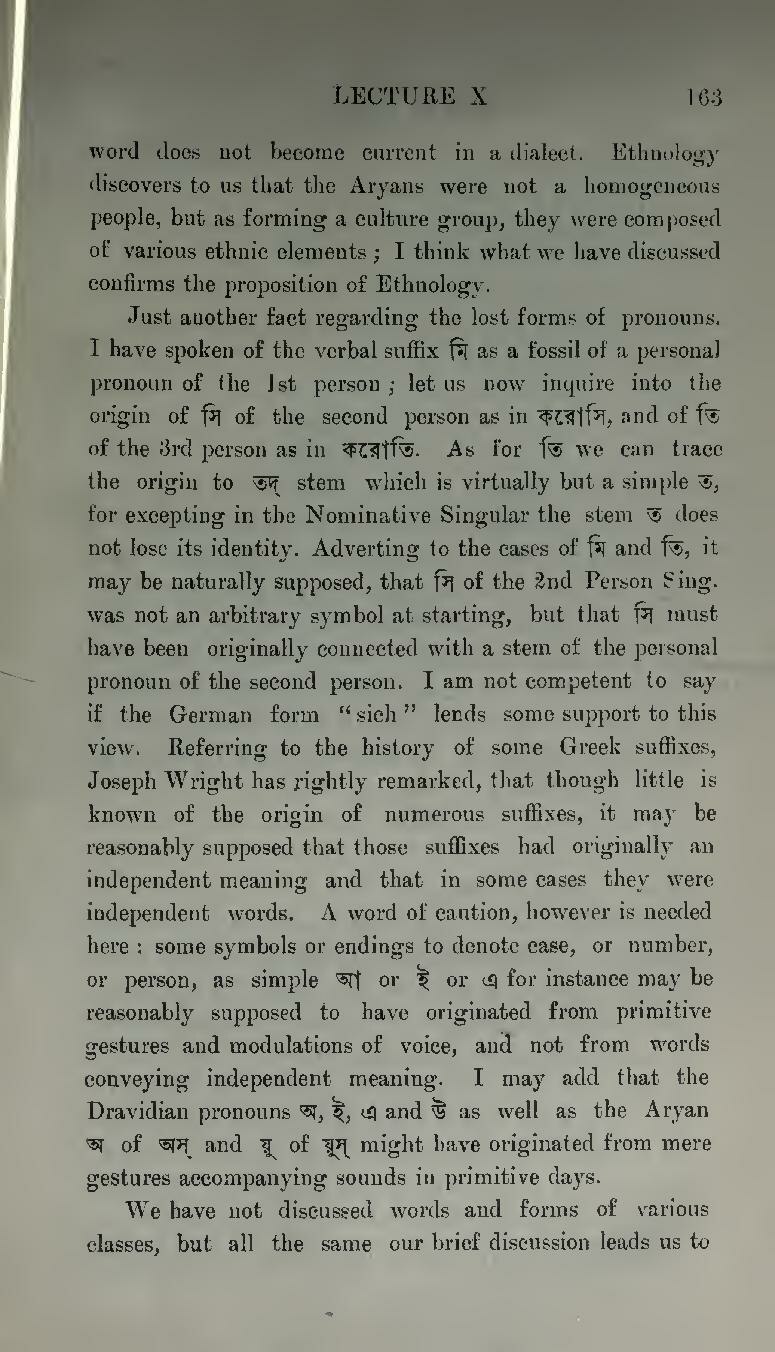word does not become current in a dialect. Ethnology discovers to us that the Aryans were not a homogeneous people, but as forming a culture group, they were composed of various ethnic elements; I think what we have discussed confirms the proposition of Ethnology.
Just another fact regarding the lost forms of pronouns. I have spoken of the verbal suffix মি as a fossil of a personal pronoun of the 1st person; let us now inquire into the origin of সি of the second person as in করোসি, and of তি of the 3rd person as in করোতি. As for তি we can trace the origin to তদ্ stem which is virtually but a simple ত, for excepting in the Nominative Singular the stem ত does not lose its identity. Adverting to the cases of মি and তি, it may be naturally supposed, that সি of the 2nd Person Sing. was not an arbitrary symbol at starting, but that সি must have been originally connected with a stem of the personal pronoun of the second person. I am not competent to say if the German form "sich" lends some support to this view. Referring to the history of some Greek suffixes, Joseph Wright has rightly remarked, that though little is known of the origin of numerous suffixes, it may be reasonably supposed that those suffixes had originally an independent meaning and that in some cases they were independent words. A word of caution, however is needed here: some symbols or endings to denote case, or number, or person, as simple আ or ই or এ for instance may be reasonably supposed to have originated from primitive gestures and modulations of voice, and not from words conveying independent meaning. I may add that the Dravidian pronouns অ, ই, এ and উ as well as the Aryan অ of অস্ and য়ু of য়ুস্ might have originated from mere gestures accompanying sounds in primitive days.
We have not discussed words and forms of various classes, but all the same our brief discussion leads us to
